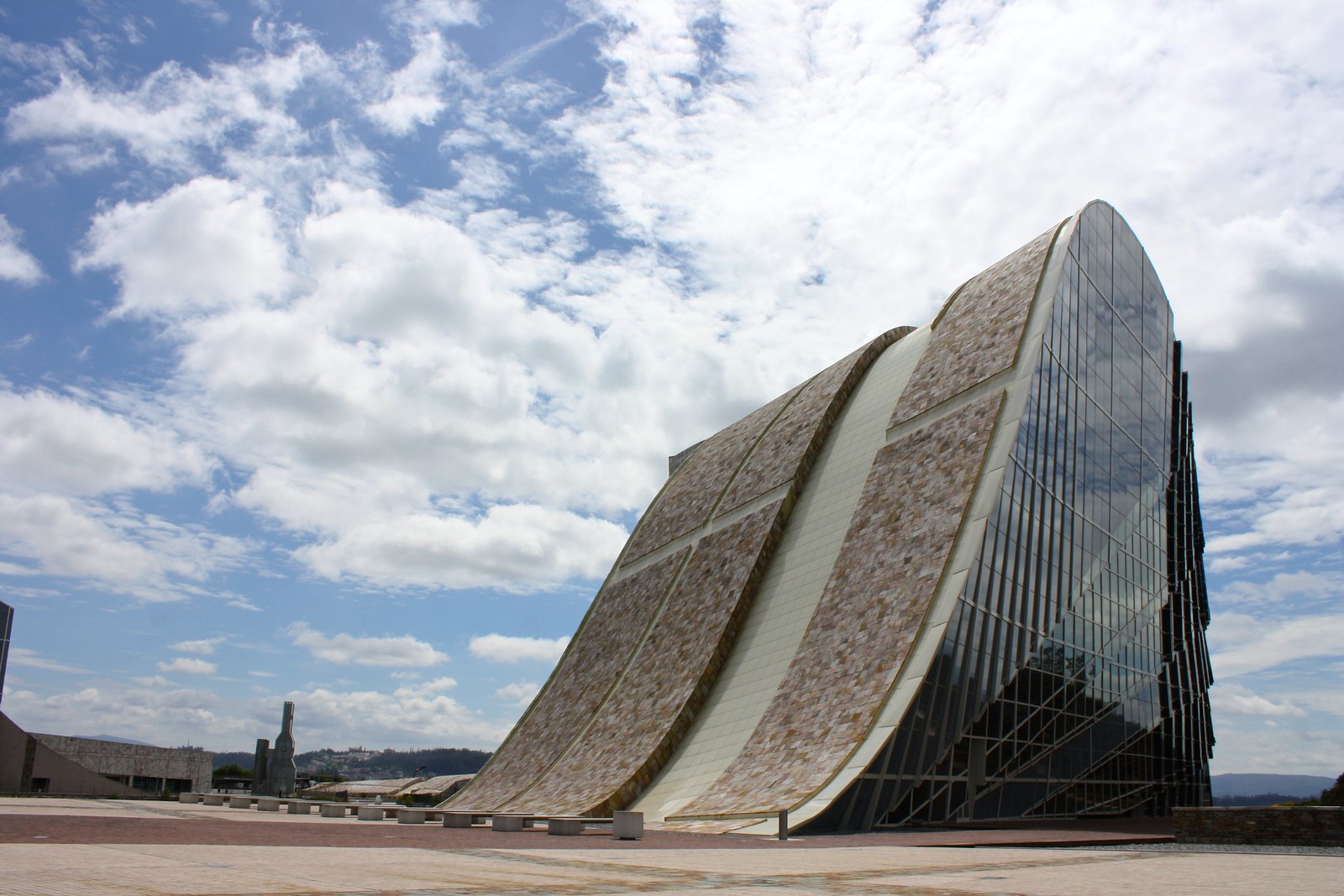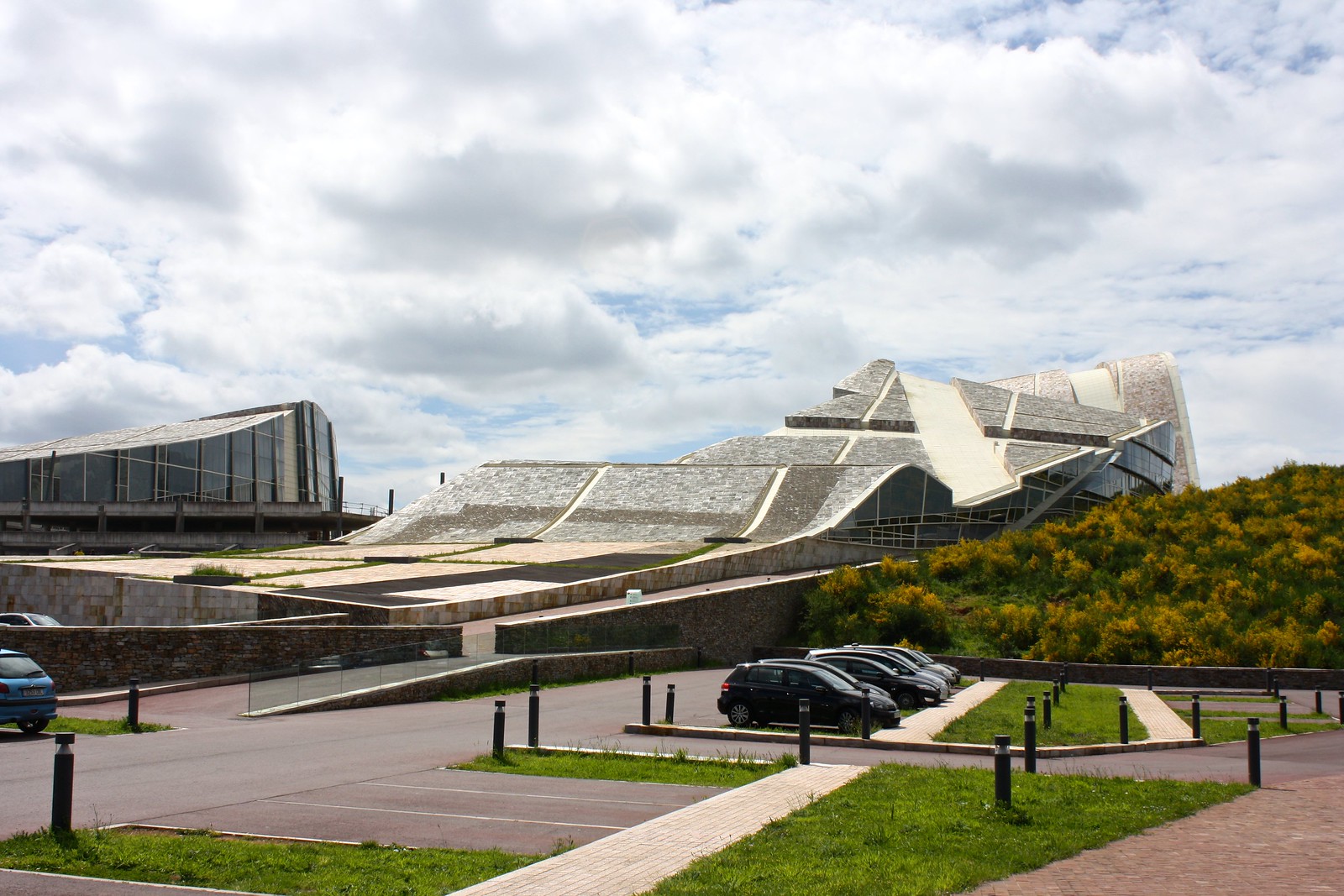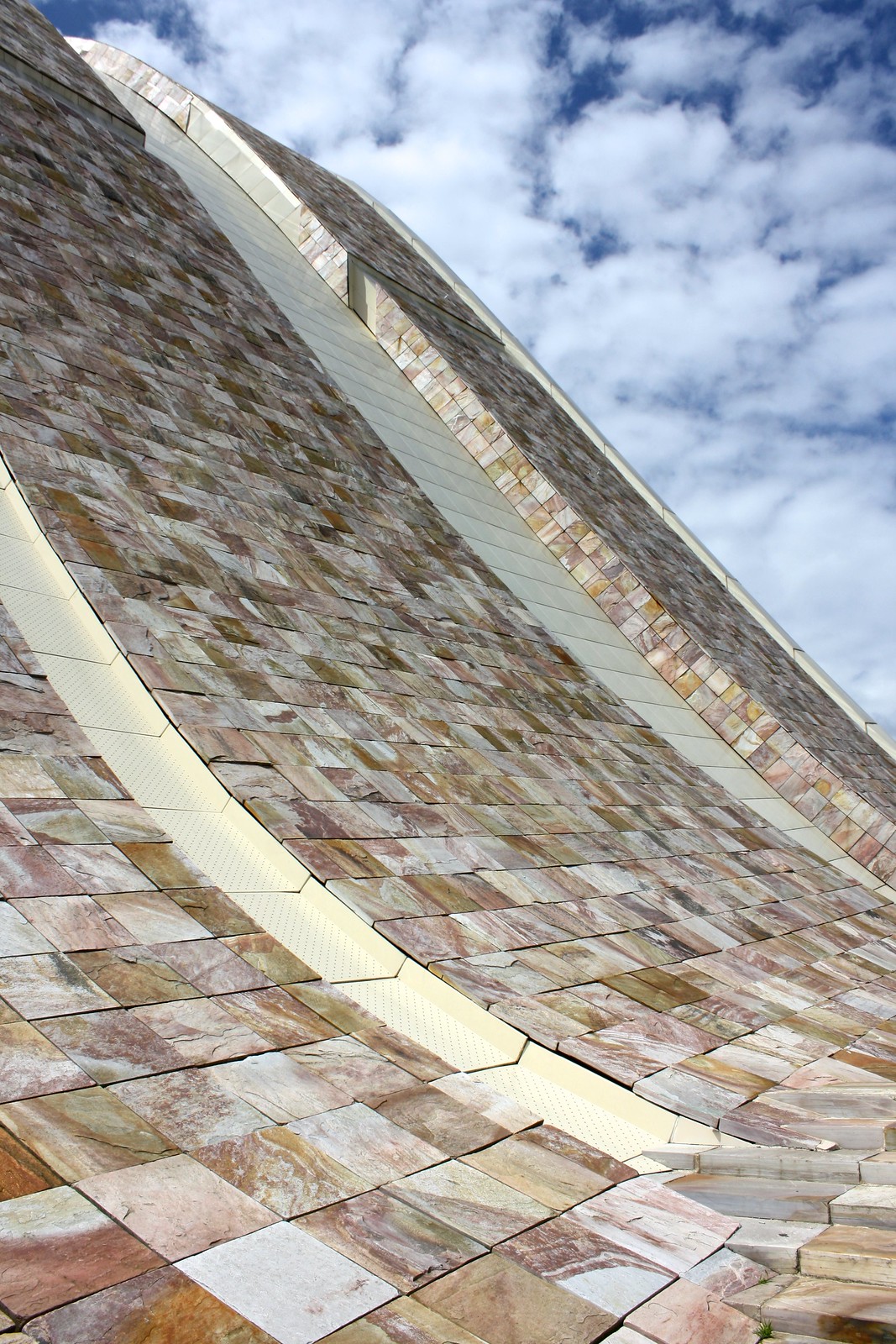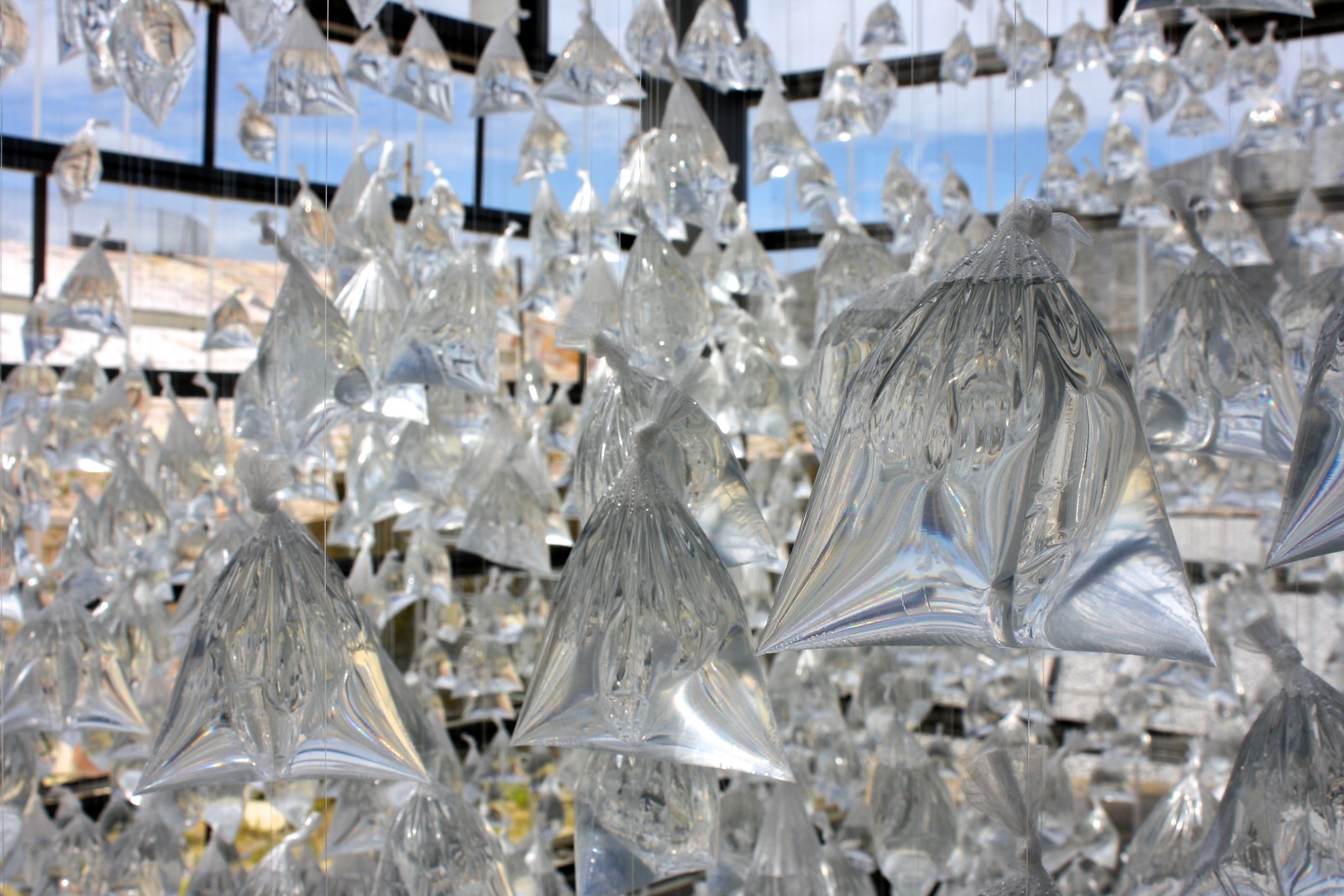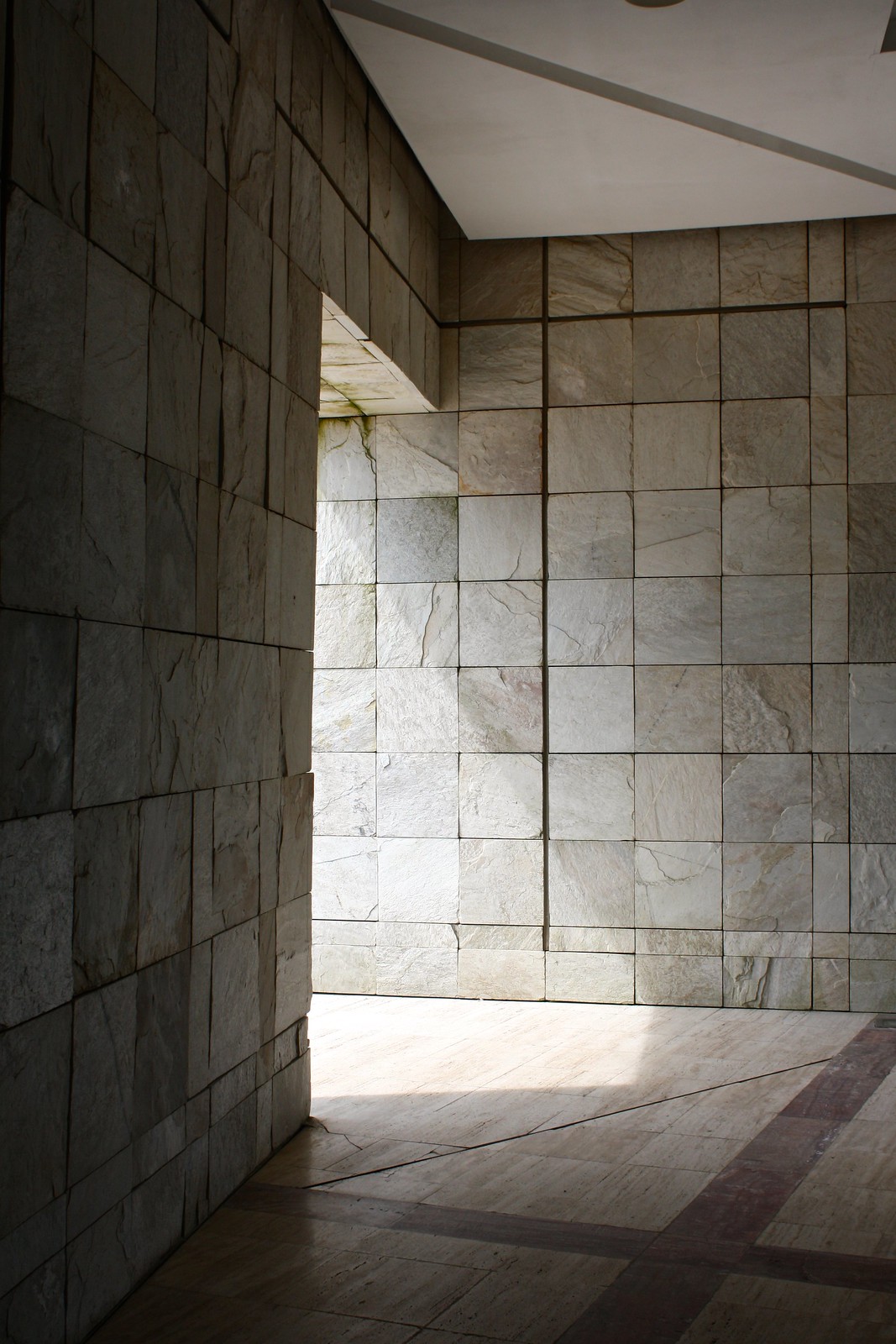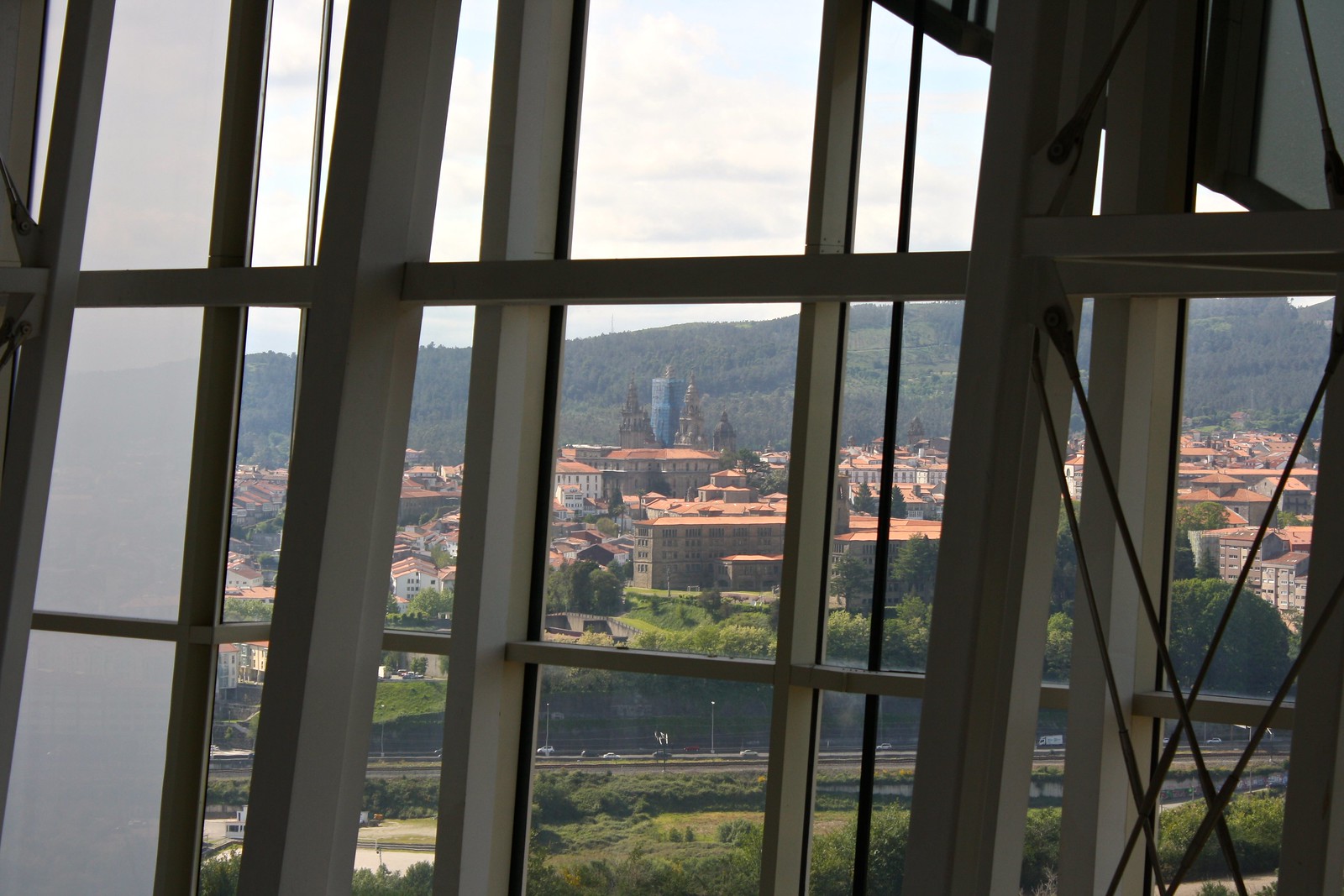When you think of Santiago de Compostela, you usually think of moody Romanesque architecture, over-the-top gilded Baroque churches, and charming homes with glassed-in balconies and overhanging arches. So it might come as a surprise that the city is actually home to a huge project of contemporary architecture built on Monte Gaiás, a hill southeast of the city center. Called the
Cidade da Cultura de Galicia or “City of Culture of Galicia,” this ambitious arts and cultural center was designed by New York architect Peter Eisenman and constructed between 2001 and 2011.
The Cidade currently consists of the following four buildings:
- Arquivo de Galicia: the “Archives of Galicia,” which stores the archives of all newspapers and publications in Galicia
- Biblioteca de Galicia: the “Library of Galicia,” which is a repository of all books published in the Galician language or dealing with Galicia in other languages
- Museo de Galicia: the “Museum of Galicia,” which is supposed to house a museum dedicated to the history and heritage of the region of Galicia but right now only has temporary exhibitions
- Servizos Centrais: the “Central Services,” or the facilities management and administration building
While two buildings have yet to be built:
- Centro da Música e das Artes Escénicas: the “Music and Performing Arts Center,” essentially an opera house
- Centro de Arte Internacional: the “International Art Center,” a contemporary art museum dedicated to Latin American and European art
You can’t miss the Cidade’s distinct, swooping form, which is visible from the train station and much of the new part of town.
Modern architecture
The whole complex is rich in symbolism. You immediately notice the lack of right angles, as all four buildings are sculpted to look like
waves, waves of the Atlantic Ocean half an hour away on the coast. The Cidade’s footprint is nearly the same size and shape as that of Santiago’s
zona vella or historic old town. And the crevices or pathways between each building recall the grooves on a
scallop shell, the symbol of the Camino de Santiago.
No two windows here are alike; they had to each be individually fabricated (something that surely caused the budget to grow out of control). And, curiously, they used Brazilian split quartzite for the pathways and roofing tiles instead of the granite that is native to Galicia.
Temporary exhibitions & concerts
About once or twice a year, the Cidade cycles through a new temporary exhibition dedicated to a central theme. When I first arrived in town last year, there was one going on about the Orinoco River and the indigenous South Americans who live around it, and near the end of this past school year, the
Auga Doce or “Fresh Water” exhibit brought together paintings on loan from various museums as well as an examination of how cultures around the world—and Galicia in particular—have lived off of the river.
And last fall, I even went to a concert to see Milladoiro, one of the most famous bands from Galicia. It was kind of awkward because the “concert hall” was merely a large empty space at the end of one of the buildings, but I really enjoyed getting to experience traditional Galician bagpipes, flutes, and singing. Icelandic pop superstar Björk even performed at the Cidade in June of 2012!
Stalled construction
The project broke ground during the boom of Spain’s housing bubble in the 2000s, but it still wasn’t finished by the time
la crisis (the economic crisis) hit by decade’s end. Only four of the planned six buildings have been finished, and to make matters worse, the original budget of around
100 million euros reached
four times that amount. Yet the two keystone elements of the Cidade—the opera house and the art museum—have been canceled for the time being, leaving the City of Culture
effectively culture-less. Those two phases have left huge, gaping holes in the ground, making for an awkward elephant in the room when visiting the area.
The Cidade, therefore, has been hugely controversial among Galicians, not only because some describe it as a “bottomless pit” for government funds or a “graveyard for money,” but also because it’s simply an extravagance, especially for a city of barely 100,000 people. Other Spanish economic powerhouses such as
Bilbao and
Valencia got their own contemporary monuments around ten years ago, so it kind of seems like Santiago is playing a “me-too” game that turned out to be a huge waste of funds once the crisis hit.
How to get there
The Cidade da Cultura is situated on a hill a 45-minute hike southeast of the cathedral, so it’s in an awkward place if you don’t have a car (especially when it’s raining). However,
city bus #9 runs here once every hour, with bus #C11 picking up on reduced hours Saturday afternoons, Sundays, and holidays.
What do you think? A cool project of contemporary architecture worth finishing or a money drain that should never have been started? Comment below!


